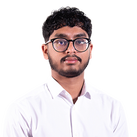Chocflation: Inside the cocoa crisis leading to skyrocketing Easter egg prices
Easter eggs are costing 50 per cent more than last year as the price of cocoa continues to surge. Jabed Ahmed and Lydia Patrick examine what has triggered ‘chocflation’, and why this might be just the beginnning of our woes


It’s that time of year when chocolate is at the uppermost of many people’s minds in the UK. Children line up for egg hunts, parents brace for the impact and even senior doctors in the NHS feel the need to issue a warning about how much of the sweet stuff to eat.
So news that the price of Easter eggs and chocolate bunnies has surged by more than 50 per cent in the last year has been met with predictable disappointment.
Treats such as Mini-eggs have skyrocketed by 46.2 per cent, with a kilo packet at £12.95 now costing £4 more than it did 12 months ago, according to consumer watchdog Which?
Easter eggs from brands such as Maltesers, Lindt and Cadbury also marked up by at least 50 per cent, the figures show.
It is all linked to an astonishing rise in the price of cocoa beans which surged above £7,900 a tonne for the first time this week. Weight for weight, cocoa is now more than 11 times more valuable than oil.
The overall price of chocolate has increased by 12.6% in a year – significantly more than the 5.6% rise seen on supermarket food and drink generally.
The reason can be attributed to fairly seismic global events. A poor cocoa bean harvest from the two largest suppliers, Ghana and Ivory Coast due to extreme weather, a global supply chain pandemonium from the ongoing conflict in the Red Sea, and extreme drought in the Panama Canal has helped trigger “chocflation”.
Some chocolate goods have shrunk in size since last year, while the prices stayed the same or even increased, otherwise known as “shrinkflation”.
With the price of cocoa growing at unprecedented levels, experts tell The Independent exactly what is causing this crisis, and why is might just be the beginning of chocolate lovers’ woes.
Climate change
Surmaya Talyarkhan, Senior Sustainable Sourcing Manager for the Faitrade Foundation, said one of the driving forces behind the crisis is climate change, lower yields and low incomes for cocoa farmers.
Nearly all cocoa globally (99.9%) is grown in countries that are the most vulnerable and least well prepared to cope with worsening climate impacts, according to the Energy and Climate Intelligence Unit.
The bulk of chocolate consumed in Europe is farmed in Ghana and Ivory Coast, with both countries facing the uncertain extremities of weather conditions and falling victim to mass deforestation. The two countries combined produce more than two-thirds of the world’s beans.
High market prices do not necessarily filter back to the farm gate, with the majority of cocoa farmers living in extreme poverty. Farmers in West Africa earn on average as little as less than £1 a day – well below the absolute poverty line defined by the United Nations.
Cash-strapped farmers are unable to invest in their cocoa farms, leaving them with old, decaying trees that crumble under extreme weather and disease.
Ms Talyarkhan told the Independent: “The causes are quite worrying, the reason we have high prices is because of a drop in supply from crop loss which is caused primarily by climate change and disease.”
By 2050, some varieties of cocoa bean will not be able to grow due to changes in the terrain they are harvested in.
Ghana has lost 65 per cent of forest cover and Cote D’Ivoire has faced further devastation with a 90 per cent loss – this is detrimental to cocoa plants which become exposed to extreme weather and diseases when trees are culled.

The Fairtrade Foundation is advocating for fairer prices for farmers to stop the younger generation leaving the gruelling industry for good.
Farmer Ismark Kpabitey, a struggling cocoa farmer from the Ahafo region of Ghana, shared his concerns about the dying industry.
He said: “I have a wife and a son, Bastian. I used to want to be one of the greatest farmers in the country. But if things don’t change, I don’t think he will want to be a farmer.”
El Niño
The term ‘El Niño’ is widely used to describe the warming of sea surface temperatures. It is a phenomenon that occurs every few years, most typically concentrated in the central-east equatorial Pacific.
Marco Forgione, director general at The Institute of Export and International Trade, explained how it has led to a damp December, prompting a scarce harvest as the crop was struck by black pod disease.
The result is a much reduced crop yield, 11 per cent smaller than last year, according to forecasts published by the International Cocoa Organization.
The drought in the Panama canal region caused by El Nino has further exacerbated worldwide trade delays.
Ongoing supply chain issues in the Red Sea due to the ongoing conflict in the Middle East is also contributing to the massive price surge. The mid-year harvest for the Ivory Coast is down by 33 per cent and by 25 per cent in Ghana, meaning the crisis is not going anywhere anytime soon, Mr Forgione added.
He explained: “All of this relates to the fragility of global supply chains, we are too overly reliant on single market and a single route.
“In manufacturing food we prize low cost, just-in-time manufacturing rather than a resilient anti-fragile sustainable supply chain. When there is supply chain disruption there is price pressure, shrinkflation and a lack of availability.”
What does this mean for chocolate lovers?
With no end in sight for the dwindling chocolate stock, there is a risk that there will be a shortage of chocolate on the shelves.
According to the International Cocoa Organization’s forecasts, demand for cocoa is set to outstrip supply by more than 370,000 tonnes this year.
Last year Mondelez, the owner of Cadbury, increased their prices by 15 per cent and Mr Forgione predicts the same, or even higher, in 2024.
According to the Which? supermarket food and drink inflation tracker, a Maltesers Truffles Luxury Easter Egg in Waitrose went from £8 in February 2023 to £13 in 2024 – an increase of 62.5 per cent.
At Tesco, a Ferrero Rocher Golden Easter Egg rose from £10 to £15 in the same period.
Consumers have also been hit hard with the price of one of the nation’s most popular chocolate bars, Freddo, reaching heights of 36p this year.
Join our commenting forum
Join thought-provoking conversations, follow other Independent readers and see their replies
Comments
Bookmark popover
Removed from bookmarks